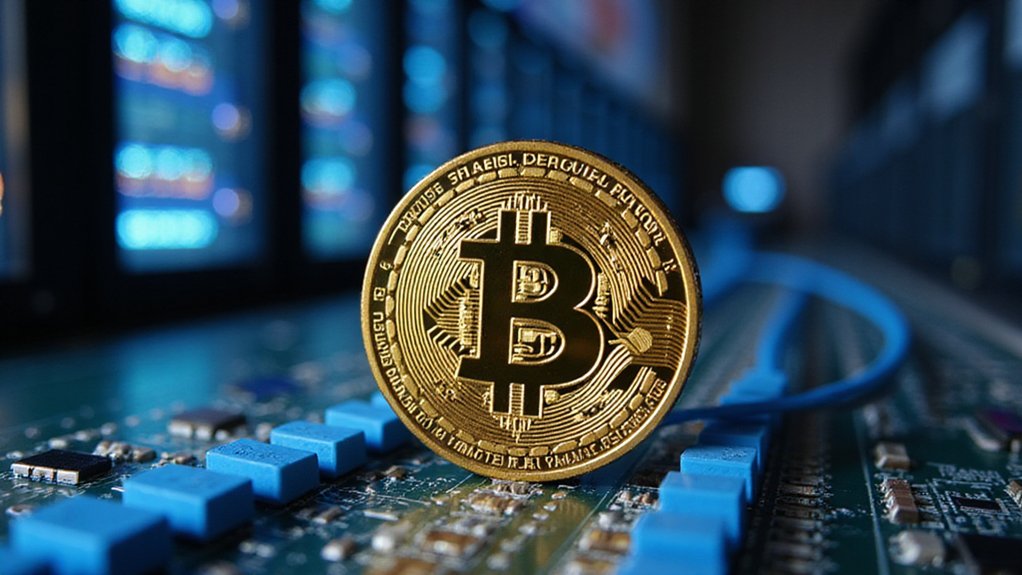Crypto airdrops—digital asset windfalls for the strategically positioned—require systematic preparation rather than mere luck. Participants should maintain compatible wallets, monitor reputable news platforms and project Discords, participate in qualifying on-chain activities, and remain vigilant during snapshot periods. The savvy recipient distinguishes between legitimate ecosystem-building distributions and dubious token schemes designed to harvest wallet addresses. A judicious mix of social engagement, protocol interaction, and portfolio management separates casual claimants from airdrop professionals.

Why slog through the traditional financial quagmire when blockchain projects are quite literally giving away digital assets for free?
Crypto airdrops—the practice of distributing tokens directly to wallet addresses—have emerged as a legitimate avenue for acquiring assets without the customary capital outlay.
In the evolving digital finance landscape, crypto airdrops represent the elegant intersection of strategic generosity and ecosystem cultivation—free assets with purpose.
These distributions serve multiple functions: democratizing token ownership, bootstrapping nascent ecosystems, and catalyzing network effects through expanded participation.
The mechanism is elegantly straightforward, yet the execution requires a modicum of strategic diligence.
Airdrops manifest in several variants, each with distinct parameters for eligibility.
Standard airdrops typically require minimal effort—the mere submission of a compatible wallet address.
Bounty iterations demand more engagement, rewarding social amplification or content creation.
Holder airdrops, perhaps the most passive approach, distribute tokens based on existing crypto portfolios at predetermined snapshot intervals.
For the well-connected or particularly active community members, exclusive airdrops offer invitation-only opportunities, often with more substantial rewards.
Locating legitimate airdrop opportunities requires vigilance across multiple information channels.
Reputable crypto news platforms, project-specific Discord servers, and specialized aggregator sites like airdrops.io constitute the primary intelligence network for prospective recipients.
Major exchanges frequently support token distributions, making them worthy of monitoring.
Educational platforms occasionally dispense rewards for completing learning modules—an intellectually stimulating approach to acquisition.
Preparation for eligibility involves calibrated wallet management and, depending on the airdrop taxonomy, varying degrees of participation.
This may entail holding specific tokens during snapshot periods, completing prescribed social actions, or engaging in on-chain activities like testnet participation or protocol interaction (EigenLayer’s restaking mechanism serves as an illustrative example).
The judicious participant evaluates the time-to-reward ratio before committing resources.
Post-receipt protocols vary considerably.
Some tokens arrive automatically, while others demand manual claiming through verification processes.
Strategic holders may retain tokens for appreciation potential, while market pragmatists might opt for immediate liquidation—each approach carrying its particular risk calculus in the notoriously volatile crypto marketplace.
Always be wary of potential scams that request private keys or sensitive wallet information under the guise of legitimate airdrops.
Before participating in any airdrop opportunity, it’s critical to conduct due diligence to protect yourself from potential pump-and-dump schemes or fraudulent projects.
Consider setting up price alerts through platforms like Gemini to monitor market movements of newly acquired airdropped tokens for optimal trading decisions.
Frequently Asked Questions
Are Airdrops Taxable in My Country?
Crypto airdrops generally constitute taxable income in most jurisdictions—the quintessential tax authority dilemma of “if it has value, we’ll tax it.”
Without knowing your specific country, one can only note the prevailing global approach: taxation upon receipt at fair market value, followed by capital gains tax upon disposal.
The IRS, for instance, requires reporting as ordinary income the moment you gain dominion and control over those digital freebies (regardless of their subsequent value trajectory).
How Do I Avoid Airdrop Scams?
Avoiding airdrop scams requires vigilance on multiple fronts.
Investors should verify project legitimacy through official channels, never share private keys (a cardinal sin in crypto circles), and approach time-sensitive offers with healthy skepticism.
Using burner wallets minimizes exposure, while legitimate airdrops never demand upfront payments.
When interacting with platforms, disciplined users disconnect immediately afterward and monitor smart contracts through blockchain explorers—basic hygiene in an ecosystem where grifters lurk behind every promising opportunity.
Can I Participate in Airdrops From a Centralized Exchange?
Yes, centralized exchanges (CEXs) frequently facilitate airdrops.
Users holding specified cryptocurrencies at snapshot dates can qualify, provided they meet requirements like KYC verification and minimum token holdings.
The process typically involves automatic distribution to exchange wallets—a convenience that trades self-custody for simplicity.
While CEX airdrops offer reduced technical complexity and scam protection, they come with potential withdrawal restrictions and jurisdictional limitations that savvy participants should carefully evaluate before committing their digital assets.
What’s the Average Value of a Typical Airdrop?
Airdrop values exist on a remarkably variable spectrum, with most falling between $5-500, though outliers dramatically skew perceptions.
While retail participants might collect modest sums, early adopters of significant protocols have received windfalls exceeding $10,000 (notably UNI’s $1,400 and Arbitrum’s $1,000+ distributions).
The median value—a more instructive metric than mean—hovers around $70-150, though market conditions can transform these estimates into numerical mirages overnight.
How Quickly Can I Sell Airdropped Tokens?
Selling airdropped tokens can occur almost immediately after receipt, though timing varies by platform.
Most exchanges list new tokens within hours of distribution, enabling near-instant liquidity.
Prudent sellers should factor in gas fees, which might devour profits on smaller airdrops.
The real constraint isn’t technical but strategic—selling during peak demand typically yields maximum returns, a window that often materializes within 24-48 hours post-distribution (when market froth reaches its apex).









